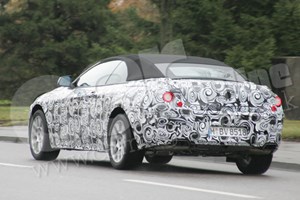There's no reinventing of the wheel going on here--just highly evolved Aston Martin cues such as a wide-mouth grille, meaty 19-inch wheels set in Coke-bottle-shaped fender flares, short overhangs, long dash-to-axle ratio, and a streamlined, set-back cabin. Swan-wing doors rise at a 12-degree angle when opened. Compared with the DB7, the new car's wheelbase is nearly six inches longer and the front track two inches wider.
There's also the sense that, in this world of robots and just-in-time manufacturing, the DB9 is a handbuilt car. You get the feeling a lot of white-coated technicians and artisans fussed over it to make it special for the buyer. Aston wants you to see this in details such as the one-piece chrome strip around the side window openings or the headlamps free of cutlines intersecting at the fenders. In the interior, too, instead of little strips of wood here and there, Aston uses large wood pieces (walnut, mahogany, or even bamboo) on the dash upper center stack and top edges of the doors. These are "structural," not just ornamental. There's a three-dimensional aluminum look for the floodlit instruments. Bridge of Weir does the leatherwork. A clear glass (not plastic) starter button on the dash center stack glows red when the ignition is on and turns blue when the engine has subsequently started.
At the same time, the DB9 benefits from access to parent Ford Motor Company's bank account, research labs, and tier-one suppliers. Jeremy Main, product-development director, explains that the structure of the new DB9 is composed entirely of aluminum extrusions and castings joined with polyurethane adhesive. That's right, it's glued together. Aston claims a stiff 27 Hz torsional-rigidity figure.









